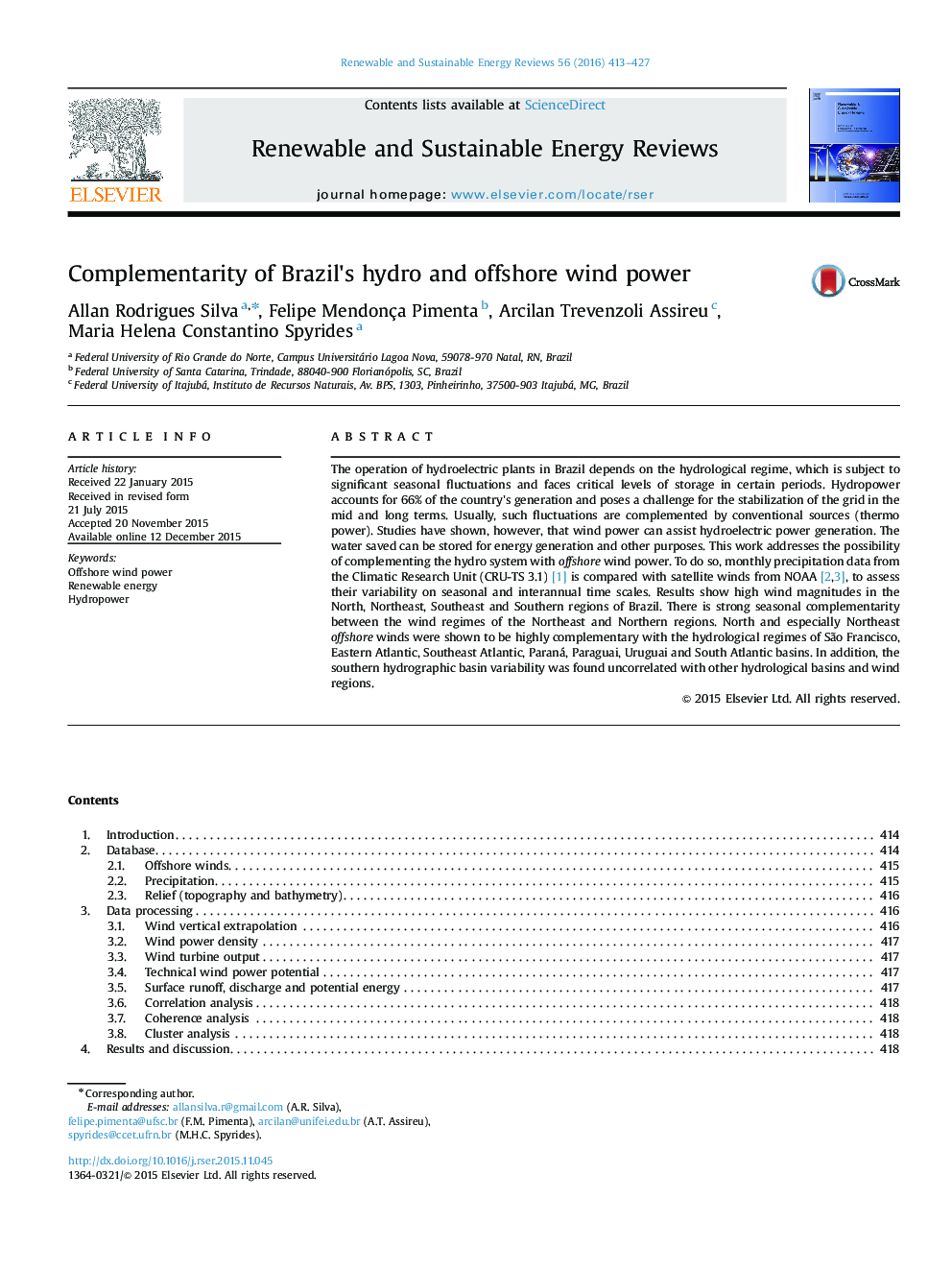| Article ID | Journal | Published Year | Pages | File Type |
|---|---|---|---|---|
| 8114752 | Renewable and Sustainable Energy Reviews | 2016 | 15 Pages |
Abstract
The operation of hydroelectric plants in Brazil depends on the hydrological regime, which is subject to significant seasonal fluctuations and faces critical levels of storage in certain periods. Hydropower accounts for 66% of the country׳s generation and poses a challenge for the stabilization of the grid in the mid and long terms. Usually, such fluctuations are complemented by conventional sources (thermo power). Studies have shown, however, that wind power can assist hydroelectric power generation. The water saved can be stored for energy generation and other purposes. This work addresses the possibility of complementing the hydro system with offshore wind power. To do so, monthly precipitation data from the Climatic Research Unit (CRU-TS 3.1) [1] is compared with satellite winds from NOAA [2], [3], to assess their variability on seasonal and interannual time scales. Results show high wind magnitudes in the North, Northeast, Southeast and Southern regions of Brazil. There is strong seasonal complementarity between the wind regimes of the Northeast and Northern regions. North and especially Northeast offshore winds were shown to be highly complementary with the hydrological regimes of São Francisco, Eastern Atlantic, Southeast Atlantic, Paraná, Paraguai, Uruguai and South Atlantic basins. In addition, the southern hydrographic basin variability was found uncorrelated with other hydrological basins and wind regions.
Related Topics
Physical Sciences and Engineering
Energy
Renewable Energy, Sustainability and the Environment
Authors
Allan Rodrigues Silva, Felipe Mendonça Pimenta, Arcilan Trevenzoli Assireu, Maria Helena Constantino Spyrides,
